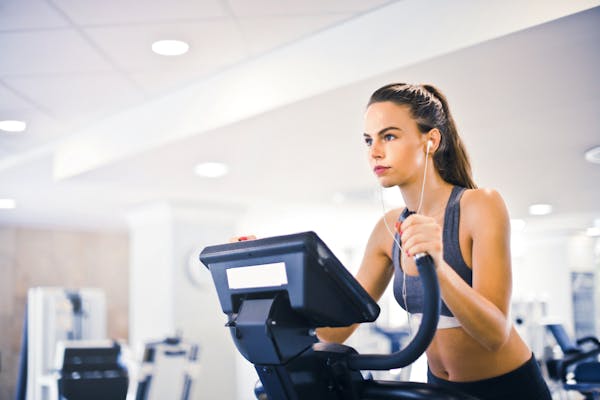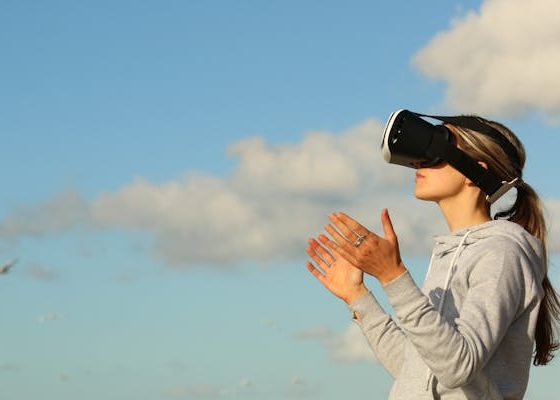
In the modern era, athletes have access to a wealth of technology designed to enhance their performance, monitor their health, and speed up recovery. The integration of advanced technology into sports has revolutionized the way athletes train, compete, and recover, ensuring they perform at their peak while minimizing the risk of injury. This article delves into the best technology for athletes, highlighting innovations in wearables, training equipment, recovery tools, and nutrition management.
Top 5 Best Technology for Athletes
Wearable Technology: Monitoring and Enhancing Performance
1. Smartwatches and Fitness Trackers
Smartwatches and fitness trackers are indispensable tools for athletes, providing real-time data on various metrics such as heart rate, calories burned, distance covered, and sleep patterns. Brands like Garmin, Apple, and Fitbit offer devices tailored to different sports, equipped with GPS, heart rate monitors, and other sensors to provide comprehensive insights into an athlete’s performance.
2. Heart Rate Monitors
Heart rate monitors, often integrated into smartwatches or available as standalone chest straps, help athletes maintain optimal training intensity. By monitoring heart rate zones, athletes can ensure they are training at the right intensity to improve endurance, speed, and overall cardiovascular health.
3. GPS Tracking Devices
GPS tracking devices are essential for athletes involved in outdoor sports like running, cycling, and hiking. These devices provide accurate data on speed, distance, and route, allowing athletes to analyze their performance and make necessary adjustments to their training regimen.
4. Biometric Sensors
Biometric sensors, such as the WHOOP Strap, provide detailed insights into an athlete’s physiological data, including heart rate variability (HRV), respiratory rate, and skin temperature. This data helps athletes monitor their recovery, stress levels, and overall health, enabling them to make informed decisions about their training and recovery protocols.
Advanced Training Equipment: Elevating Workouts
1. Smart Training Systems
Smart training systems like Peloton and Zwift have revolutionized indoor training for cyclists and runners. These platforms offer interactive workouts, real-time performance data, and virtual competitions, making training sessions more engaging and effective. Athletes can track their progress, compete with others, and access a variety of training programs tailored to their goals.
2. High-Tech Gym Equipment
Modern gym equipment, such as the Tonal and Mirror, combines strength training with digital technology. These devices offer personalized workout programs, real-time feedback, and progress tracking, allowing athletes to optimize their strength training routines from the comfort of their homes.
3. Virtual Reality (VR) Training
Virtual reality (VR) training systems provide immersive experiences that can enhance an athlete’s skills and mental preparedness. VR can simulate game scenarios, helping athletes improve their decision-making, reaction time, and spatial awareness. Brands like STRIVR and Rezzil are leading the way in VR training for sports like football, basketball, and soccer.
4. Smart Shoes and Insoles
Smart shoes and insoles, such as those developed by Nike and Under Armour, are embedded with sensors that track metrics like stride length, ground contact time, and foot strike pattern. This data helps athletes optimize their running technique, reduce the risk of injury, and improve overall performance.
Recovery Tools: Speeding Up Recovery and Reducing Injuries
1. Compression Wear
Compression wear, including garments like socks, sleeves, and tights, helps improve blood circulation, reduce muscle soreness, and speed up recovery. Brands like 2XU and Skins offer compression gear designed specifically for athletes, aiding in faster recovery post-training or competition.
2. Percussive Therapy Devices
Percussive therapy devices, such as the Theragun and Hypervolt, use rapid pulses to penetrate deep into muscle tissue, relieving tension, improving blood flow, and accelerating recovery. These devices are popular among athletes for their effectiveness in reducing muscle soreness and stiffness.
3. Cryotherapy
Cryotherapy involves exposing the body to extremely cold temperatures for a short duration to reduce inflammation, pain, and muscle soreness. Whole-body cryotherapy chambers and localized cryotherapy devices are used by athletes to speed up recovery and enhance overall well-being.
4. Electrical Muscle Stimulation (EMS)
EMS devices, like those from Compex and PowerDot, use electrical impulses to stimulate muscle contractions, helping to improve strength, endurance, and recovery. EMS is particularly beneficial for rehabilitation, muscle re-education, and reducing muscle soreness post-exercise.
5. Foam Rollers and Massage Tools
Foam rollers and massage tools are essential for myofascial release, helping to alleviate muscle tightness, improve flexibility, and reduce soreness. Advanced foam rollers with vibration technology, such as those from Hyperice, offer enhanced muscle relaxation and recovery benefits.
Nutrition and Hydration Technology: Optimizing Fuel and Hydration
1. Smart Water Bottles
Smart water bottles, such as the HidrateSpark, track an athlete’s water intake and remind them to stay hydrated. Proper hydration is crucial for optimal performance, and these devices help ensure athletes maintain their hydration levels throughout the day.
2. Nutritional Apps and Platforms
Nutritional apps and platforms like MyFitnessPal and Cronometer help athletes track their dietary intake, ensuring they consume the right balance of macronutrients and micronutrients. These tools provide personalized nutrition plans, meal tracking, and insights into how diet impacts performance and recovery.
3. Protein and Nutrient Delivery Systems
Advanced protein and nutrient delivery systems, such as those offered by brands like Huel and Soylent, provide convenient and balanced meal replacements tailored to an athlete’s needs. These products ensure athletes get the necessary nutrients for muscle repair, energy, and overall health.
4. Wearable Hydration Monitors
Wearable hydration monitors, like Nix Hydration Biosensor, provide real-time data on fluid and electrolyte loss during exercise. This information helps athletes optimize their hydration strategy, preventing dehydration and enhancing performance.
Data Analytics and Performance Analysis: Informed Decision Making
1. Performance Analysis Software
Performance analysis software, such as Dartfish and Hudl, provides detailed insights into an athlete’s performance through video analysis and data tracking. Coaches and athletes can use this data to identify strengths, weaknesses, and areas for improvement, leading to more effective training and competition strategies.
2. Biomechanics Analysis
Biomechanics analysis tools, like those from Vicon and Noraxon, use motion capture technology to analyze an athlete’s movement patterns. This data helps identify inefficient movements, prevent injuries, and optimize technique for better performance.
3. Sleep Tracking and Analysis
Sleep tracking devices, such as the Oura Ring and SleepScore Max, monitor sleep quality, duration, and patterns. Quality sleep is essential for recovery and performance, and these devices help athletes understand and improve their sleep habits.
4. AI and Machine Learning
AI and machine learning algorithms are increasingly being used to analyze large sets of performance data, providing personalized training and recovery recommendations. Platforms like WHOOP and TrainAI use AI to deliver actionable insights, helping athletes optimize their training and achieve their goals.
Sports-Specific Technology: Tailored Solutions for Various Disciplines
1. Running
For runners, technology like the Stryd Power Meter and Garmin Forerunner series offers advanced metrics such as running power, cadence, and vertical oscillation. These metrics help runners improve their efficiency and performance while reducing the risk of injury.
2. Cycling
Cyclists benefit from technology like power meters (e.g., from brands like Stages and Garmin) that measure the power output and provide insights into performance and efficiency. Smart trainers and cycling apps like Zwift offer immersive training experiences and detailed performance data.
3. Swimming
Swimmers can use devices like the FINIS SwimSense and Garmin Swim to track metrics such as stroke count, distance per stroke, and swim efficiency. These tools help swimmers optimize their technique and monitor their progress.
4. Team Sports
For team sports, technology like Catapult’s player tracking system provides data on player movements, workload, and performance metrics. This information helps coaches manage player load, prevent injuries, and optimize team performance.
5. Tennis and Racket Sports
Tennis players can use devices like the Babolat Play connected racket and the Zepp Tennis Sensor to analyze their strokes, spin, and serve speed. These tools provide insights that help players improve their technique and overall game.
Future Trends in Sports Technology
The field of sports technology is constantly evolving, with new innovations emerging regularly. Some future trends to watch include:
1. Enhanced AI and Machine Learning
AI and machine learning will continue to play a significant role in sports technology, providing more accurate and personalized insights for athletes. These technologies will help predict injuries, optimize training plans, and enhance overall performance.
2. Advanced Wearable Technology
Wearable technology will become more sophisticated, offering even more detailed data on an athlete’s physiology and performance. Innovations in sensor technology and data analytics will provide athletes with deeper insights and more actionable information.
3. Integration of Augmented Reality (AR)
Augmented reality (AR) will be increasingly used in training and competition, offering immersive and interactive experiences. AR can provide real-time feedback, simulate game scenarios, and enhance an athlete’s skills and decision-making abilities.
4. Improved Recovery Solutions
Recovery technology will continue to advance, with new tools and methods emerging to help athletes recover faster and more effectively. Innovations in cryotherapy, percussive therapy, and wearable recovery devices will play a crucial role in this area.
5. Personalized Nutrition and Hydration
Advancements in personalized nutrition and hydration technology will help athletes optimize their dietary intake and hydration strategies. DNA-based nutrition plans, smart supplements, and advanced hydration monitoring will ensure athletes get the nutrients and fluids they need for peak performance.
Conclusion
The best technology for athletes encompasses a wide range of tools and devices designed to enhance performance, monitor health, and speed up recovery. From wearable technology and advanced training equipment to cutting-edge recovery tools and personalized nutrition, these innovations

